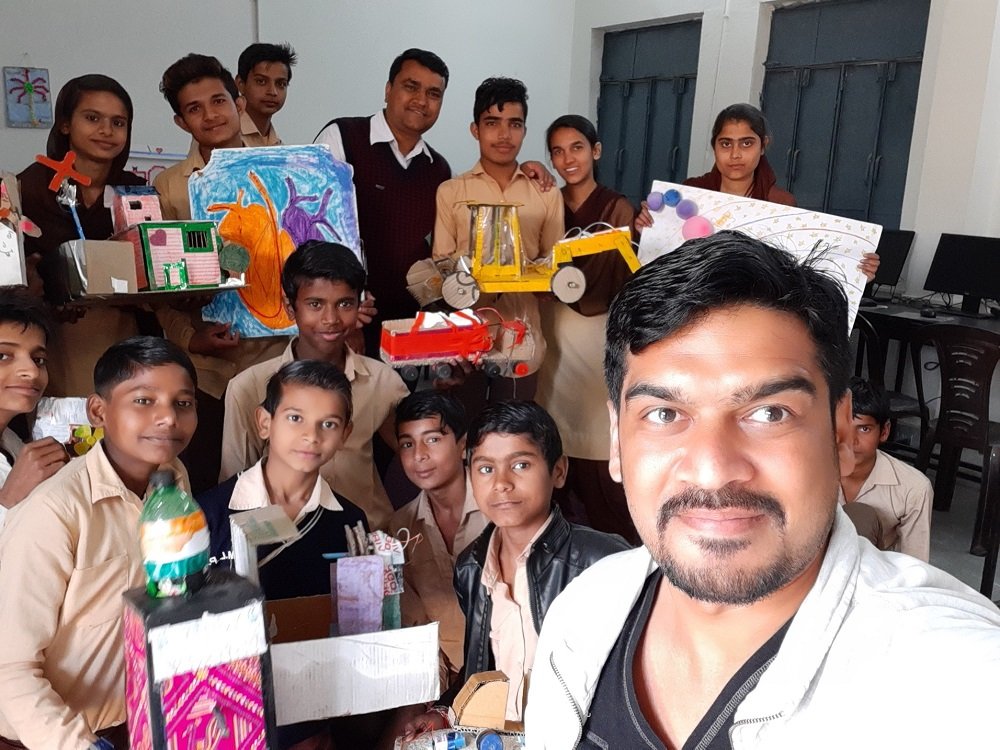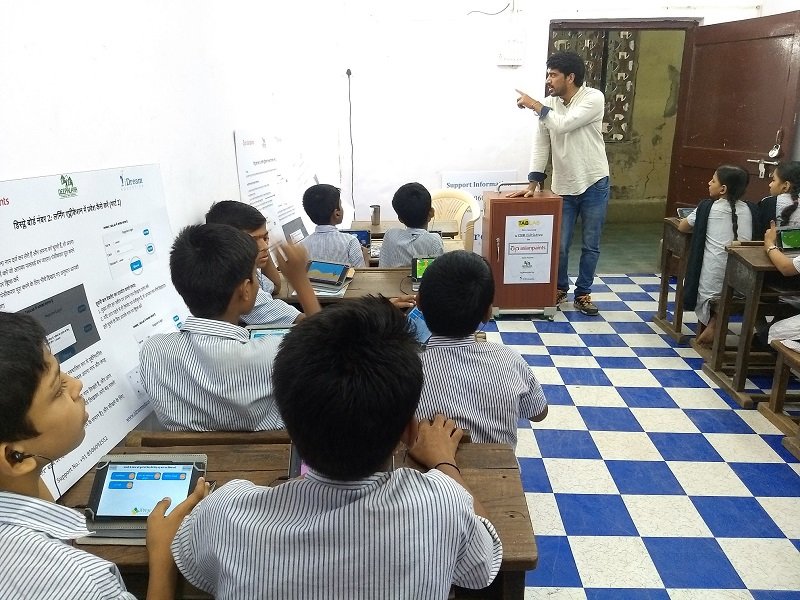Empowering students and teachers in schools, learning centers and at homes to Learn Unlimited.
Welcome to this exclusive interview with India CSR, where we will explore the innovative solutions that iDream Education integrated to empower students and teachers to Learn Unlimited. Today we are introducing Pawan Kumar, Head of Operations and Implementations at iDream Education. With over 7 years of experience in the education sector, Pawan has played a vital role in shaping iDream Education’s mission to create a universally integrated platform that serves the learning and growth needs of all learners and breaks all barriers to learning – language, state boards, multi-grade access, multi-category access, cost, socio-economic status, and location. Today, Pawan shares insights on iDream Education’s initiatives, their impact, and their vision for the future. Welcome, Pawan, and thank you for joining us.
How do you translate your vision into actionable steps and implement it effectively in your organization?
As someone who is committed to the vision of facilitating universal access to learning and growth, I believe that translating this vision into actionable steps is crucial in reaching the last-mile learners in BHARAT. To implement our vision, we aim to create a universally integrated platform that can serve the learning and growth needs of all learners and break all barriers to learning.
Given that BHARAT is a culturally diverse country with 22 languages, we recognize the importance of providing solutions that suit the needs of diverse learners. We emphasize on providing a learning platform that can be accessed online as well as offline, is user-friendly, and is in Hindi, English and the local languages. So far, we have worked in 17 states in 11 languages.
To develop a better understanding of the unique needs of students and teachers in each location, we have a ground team across India that evaluates the challenges of each location, the learning level of students and teachers’ friendliness with technology.
Once we have identified the specific challenges and needs of each location, we conduct teacher/student training programs to introduce the best-suited learning and teaching solutions. We also use a reporting dashboard to assess the usage of the iPrep-one stop learning platform and derive the impact it has on individual students, teachers, and schools as a whole.
By doing so, we believe that we can facilitate universal access to learning and growth and break down all barriers to learning to reach the last mile learner across BHARAT.

Based on your experience, what challenges have you seen the government schools facing in terms of teaching and learning, and how does iPrep help overcome the same?
As I closely work with Government schools, two of the most significant challenges are the low attendance and low learning level of students compared to the grade they are in. Government schools often have less student strength, and dropout rates are also high. All this is because of a lack of interest in learning.
Another major challenge is the infrastructural barriers. Many schools in rural areas struggle with issues like limited access to electricity, limited space, poor internet connectivity and lack of teaching resources.
However, this is where iPrep comes in.
With iPrep, we have designed a solution to overcome these challenges. We offer multi-category content that is engaging and relatable to students, including animated video lessons that connect with real-life experiences. Our practice exercises are designed to motivate students and test their knowledge, while also allowing them to track their progress and learn from content across different grades and classes without being judged.
In terms of infrastructural challenges, our solutions are designed in a way that they can be implemented in any location without requiring any specific space, furniture or wiring. Further, we enable offline digital content, to reduce the dependency on the internet, allowing us to provide education in even the remotest regions.
Overall, our approach at iDream Education is to provide a holistic solution that addresses most challenges faced by Government schools. We aim to make learning more accessible, engaging, and relevant to students, while also overcoming infrastructural barriers to ensure that education is available to all.

What is your process of putting a strategy in place once you get a license request on board?
In the beginning, I would like to highlight that our strategy is centered around understanding the specific needs and challenges of each school and location and providing customized solutions accordingly. To do this, we follow a detailed process that involves visiting each and every location and conducting an infrastructure assessment to derive an understanding of the specific challenges and opportunities for that school.
Based on this assessment, we analyze the data to determine the best-fit solution for the school, students, and teachers, taking into consideration demographic profiles, available resources, and local team support. We then implement the solution.
Once the solution is implemented, we, with the support of ground local team members visit each school for training on how to use the solution. We emphasize making teachers and students understand the value of the particular solution and iPrep.
Then, we continue to visit the school regularly to ensure that the platform is being used on a daily basis and also conduct additional activities such as science day and children’s day activities to keep the students and teachers motivated.
Finally, at the end of the academic year, we conduct an endline assessment to capture the impact of our solution. This helps us to identify areas of improvement and to evaluate how our solution is making a meaningful impact on the learning outcomes of the students.
A recent example of this is the Phase 2 implementation of iPrep Digital Class, a smart classroom solution with the district administration of East Jaintia Hills in 50 schools of EJH. Here we first conducted a baseline line assessment on iPrep tablets to understand the learning level of students.
We then implemented the best–fit solution and then showcased the benefits of our solution by demonstrating the opportunities for growth, highlighting the importance of teachers in the education system as well as in the life of students, and encouraging regular usage of iPrep. This approach has proven to be effective in driving engagement and achieving positive learning outcomes.

As you just mentioned, you operate in 17 states of our country. Haven’t you encountered any language barriers yet? If yes, then what were your counters to tackle them?
Yes, definitely! We operate in 17 states across the country, and with such diverse linguistic and cultural backgrounds, the language barrier is a common challenge. However, we have tackled this by hiring local team members who provide local content support, and training and assessing the impact of the solutions implemented.
Our all local ground team members and are well aware of the regional languages. With this, the content we enable is also bilingual which is in the local language as well as Hindi or English. This allows our learners to not just learn, but understand the meaning of each topic, word and sentence deeply.
Breaking the language barrier is crucial to enabling learning and helping students achieve grade-level learning levels by learning in their preferred language, at their own pace in an environment where they are not being judged.
Further, there are implementations where we enable iPrep in the local language and English to push students to learn and understand English which is a commonly used language. We are committed to making our platform accessible to all learners, regardless of their linguistic background.
How do you ensure that your end users (Teachers and students) make the best out of your digital learning solutions?
To ensure that our teachers and students, make the best out of iPrep, we have a two-fold approach. Firstly, we track the usage of the content on a reporting dashboard. Based on the usage data, we plan the visit of our ground team to each school. If the usage is good, we appreciate students and teachers and guide them with more diverse ways to make the best use of iPrep.
On the other hand, if the usage is not good, we aim to find out their challenges and conduct retraining on the best ways to use our solutions. However, we don’t solely rely on the data presented on the reporting dashboard; instead, we also conduct visits to schools for midline assessments to evaluate the change in students’ learning levels. This is done to demonstrate the real impact of iPrep on students.
The objective of these visits is to gain a better understanding of the students and not to judge them. Our approach ensures that our end users get the most out of our digital learning solutions and Learn Unlimited.
Also Read: iDream Education: Facilitating Universal Access to Learning and Growth – India CSR
Can you share any personal experiences or moments that have reaffirmed your commitment to iDream Education’s vision, and how has that shaped your implementation style?
Students and Teachers from every school hold a special place in my heart but some students have performed extremely well. One such student I recall is Naresh. He belonged to a low-income family, was forced to beg and fell prey to drug abuse and unethical activities. Vijay, the Project Coordinator at ‘Support’, the NGO we worked with, found Naresh unconscious on the railway track. He immediately took Naresh to the NGO’s center and provided him with needed rehabilitation. Vijay then contacted schools to enroll Naresh and provide him with a quality education.
But, schools were not willing to accept Naresh due to his inability to meet age-appropriate learning standards. Vijay and the teachers at the NGO struggled to teach Naresh and other students with different learning levels.
This is when Vijay in association with us introduced the iPrep digital library with 18 tablets in his NGO. Naresh was unaware of subjects and topics, therefore teachers began teaching him through video lessons of junior grades, helping him practice and learn.
All this was easy for them because the content on iPrep was based on real-life connections and in Marathi Medium. Naresh began to learn in a span of very little time He was all set at an age-appropriate learning level and got enrolled in school. Vijay credits digital learning for Naresh’s success, emphasizing its potential to empower students to achieve their dreams.
Now, if I talk about something that changed our implementation style. In that case, it will be an encounter of a common issue in many schools and NGOs –the ‘learning gap’. A diverse range of students with different backgrounds, learning levels, and abilities are often enrolled at schools.
We realized that only one in ten students were at their age-appropriate learning level. The majority of students faced challenges such as lack of interest, irregular attendance, or family situations that affected their learning.
To address this, we recognized the importance of conducting a baseline assessment to determine each student’s learning level; we then enabled content of all grades to empower students to learn from content of any grade, cover historical learning gaps, and even learn ahead of their current class.
We also conduct mid and end-line assessments to chart the progress of students. This in my opinion is a very effective method to bridge any learning gap students might have and ensure quality and meaningful education for all students.
Visit Facilitating Universal Access to Learning & Growth (idreameducation.org) for more information.
(India CSR)





